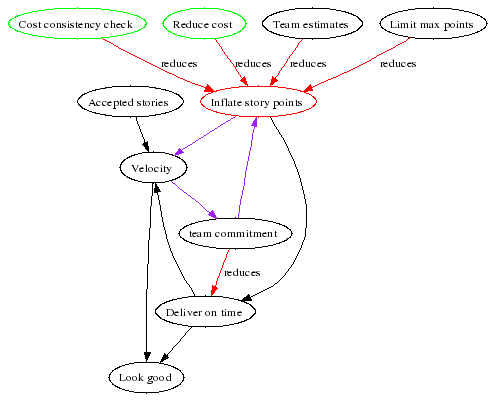The previous entry described how to estimate using points and velocity. Can’t this system be mis-used by developers?
Yes…. Developers could assign artificially high estimates to stories, thereby making it seem as if they improved their velocity. Well, developers always could do this if they made estimates. There are some forces countering this:
- Are you going to give all your stories 5 points? You aren’t allowed to assign more points: if 5 is not enough you have to break down the story into smaller stories. Don’t you think the customer is going to ask questions if each story costs 5 points?
- A customer is allowed (and expected) to question the estimates: if stories A and B seem to have the same difficulty to the customer, but the developers assign a higher cost to B, the developers had better have a good explanation. If the explanation is based on the difficulty of the feature itself, the customer can only accept it. If the explanation is based on the technicalities of implementing the stories, this might be a “smell” that the design of the code is in need of refactoring. If the developers can’t explain the difference, they should re-estimate. Stories should be estimated consistently. A customer can verify this consistency.
- Story estimates are made by the team. The whole team would have to agree to “gaming the system”. Or at least, all of the most prominent and vocal members of the team. That’s quite difficult to keep up in the open, communication-rich environment of an agile team.

This system diagram shows how we can game the system to get a higher velocity, by working faster and more sloppily or by inflating our cost estimates. Sloppy work is kept in check by the acceptance tests the customer performs. Remember: only accepted stories count when calculating velocity.
Inflation can be kept under control by:
- The customer asking for the reasoning behind the estimates
- The customer and developers looking for lower-cost ways to get the same result
- The development team as a whole is accountable for the estimates
- Cost estimates are capped at 5
However, we still see a pernicious loop (in purple): if we inflate our estimates, we increase our velocity. If our velocity increases, the team has to commit to doing more work, which makes it unlikely to easily meet the deadline. Unless the estimates are inflated again…
We’ll see in the next entry how to break this loop.

